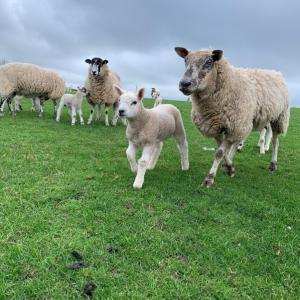
By Vet Shona Mouncey

There are several advantages to having a tight lambing period.
From a disease control perspective, having all lambs born within a few weeks of each other can help to control the spread of disease by helping to prevent build-up of parasites such as Coccidiosis and ensuring that routine treatments such as Clostridial vaccines are given at the correct age/time.
For many flocks additional labour may be needed at lambing time and being able to advertise a set period of time that help is required may prove beneficial. Also for those with more than one job, it may be necessary to have your sheep lambing when you can take time off work or when extra family help is available during the school holidays.
There are various ways to do this and which is most suitable will depend on what you are trying to achieve. If you need lambing time pulled forward, hormonal treatments may be the best option. If you are wanting to lamb in a tighter block but at your normal lambing time, teasers may be suitable.
Intravaginal progesterone devices can be used to induce oestrus and ovulation in both cycling and non-cycling ewes to both advance the breeding season and tighten up the lambing block. The device is placed intravaginally for 12 days and used in combination with equine Chorionic Gonadotrophin (eCG) at removal. Oestrus should occur 1 to 2 days later.
It is important to note that the tup:ewe ratio needs to be much higher than usual, using 1 tup to 10 ewes.
Melatonin implants can be used to advance the breeding season by stimulating the early onset of normal reproductive activity. The process starts 30 weeks ahead of the planned lambing period. An implant is placed under the skin at the base of the ear and between 30 and 40 days later, tups are introduced.
It is likely to take 2-3 weeks for mating to start and if a compact lambing period is required, teasers can be used for the first 14 days. Peak mating will occur 25-35 days after tups are introduced.
Teasers are tups which have been vasectomised surgically. This means that they still have their testicles and therefore produce testosterone and act like tups, but they are sterile and therefore do not produce any lambs. They should be introduced 14 days before the start of the breeding season and then removed when the tups are introduced.
The presence of the teasers results in more ewes cycling in a shorter space of time and therefore they will lamb in a tighter block. It should be noted that teasers need to be as fit and healthy as your tups as they will be working as much as the fertile tups. Shearlings make the best candidates so they last for several seasons and you get the most financial benefit from the cost of the surgery. Tup lambs can also be used if they are at least 6 months old but should be given less ewes than shearlings in their first year. Surgery needs to be done at least 6 weeks before they are used which means at least 8 weeks ahead of the breeding season.
All of these methods have the ability to tighten your lambing block but just bear in mind that you will need more tup power compared to normal and also more people power and space at lambing time!